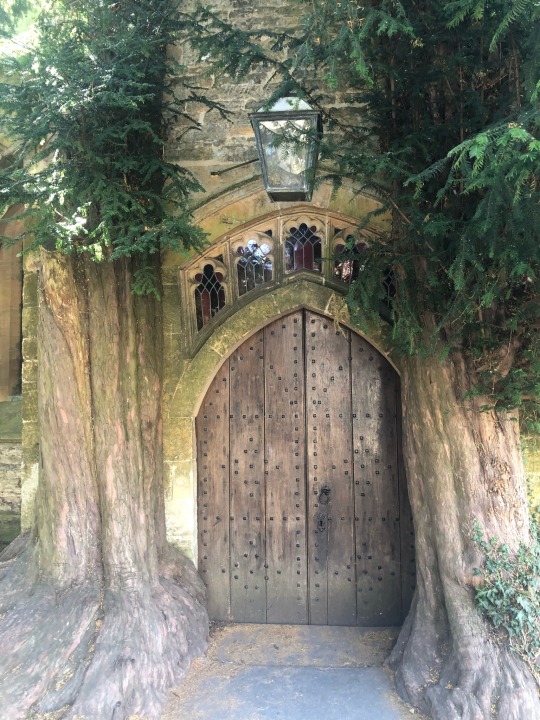#yew tree
Text
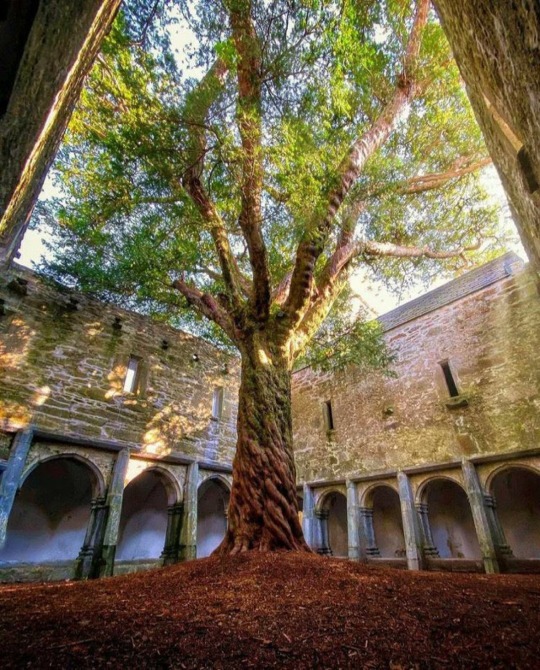
Muckross Abbey, Ireland
541 notes
·
View notes
Photo

Tree in Muckross Friary - Ireland by Kai Mechel
#medieval mood#abbey#ancient tree#gothic architecture#yew tree#my upload#silvaris#ireland#irish#st patrick's day#castle#stone#building#medieval#ancient#ruins
842 notes
·
View notes
Text

Next in the christmas botanicals series is the deadly poisonous yew tree (taxus spp.) with its shiny evergreen foliage and bright red berries. Yew’s association with christmas is documented back to 1605 in Germany where a bough of yew (or other evergreen) was brought indoors and decorated with candy, nuts, and fruit. Queen Charlotte was German and brought her regional custom of decorating yew boughs to England creating a sensation at court. In 1800 she used a full tree instead of just a bough. That tree was a yew, making the earliest christmas tree in England a yew tree. Over 50 years before Prince Albert’s “first christmas tree”.
Yews have been venerated by many peoples for thousands of years because the trees live for thousands of years and are technically immortal. Yew fossil records date to 200 million years ago. It’s kind of a big deal.
Yew is heavily associated with death and resurrection. The trees are in a perpetual state of simultaneous decay and new growth. It is the real life tree version of the Dionysus-Osiris-Esus-Jesus resurrection myth. Yew is the deified world tree and greenmantle ruling the dark half of the year. It is the literal Holly King.
Yew’s use to decorate for the winter solstice very likely dates back to prechristian times. Poisons are often considered some of the most powerful protection herbs in traditional folk beliefs and it’s no coincidence many botanicals used to make christmas wreaths and garlands are poisonous. Our animistic ancestors across the northern hemisphere were using them to protect their homes and the people within from winter’s ghosts and ghouls. Yew has long been believed to protect from ghosts and the restless dead, hence its use in graveyards ancient and modern. Today evergreen garlands are used for decoration but their origin was magical protection.
25 notes
·
View notes
Note
ask: not for whom the cricket chirps
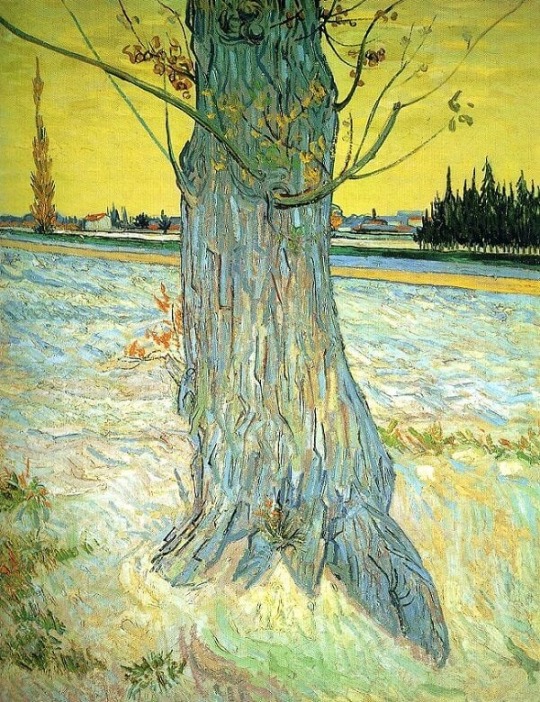
…the cricket chirps for yew
(Trunk of an Old Yew Tree, 1888 by Vincent Van Gogh)
23 notes
·
View notes
Note
i cant im so scared right now

oKAy, I got u!


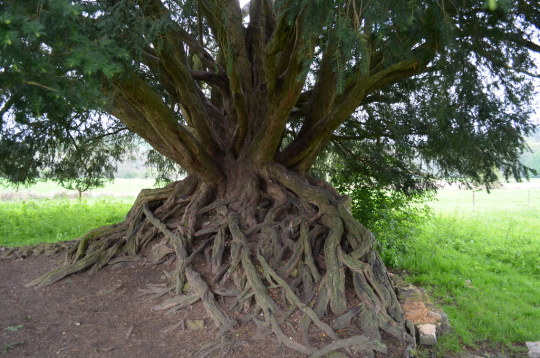

#these came in seconds apart so i can only assume they are connected..?#im sorry if this was a more genuine ask.. idk why ur scared or why u sent these but.. hi?#you okay anon?#if u are actually scared.. i'm sorry and I am sitting with u in that last tree mentally rn <3#yew tree#asks#anon#also just to be clear i pulled all these from a quick image search.. if any are ur photo n u don't want it here dm me I'll take it off#if u were looking for selfies i.. am not prepared for that rn#i am so depressed lol sorry
40 notes
·
View notes
Photo
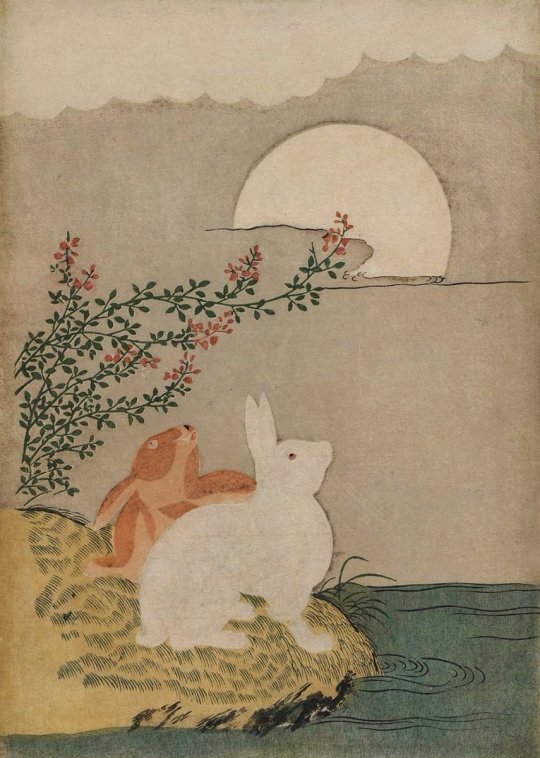




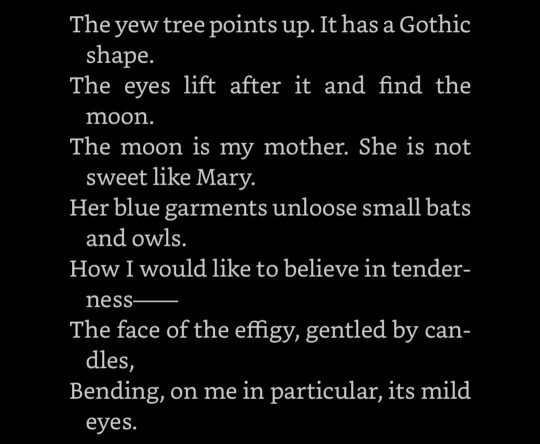
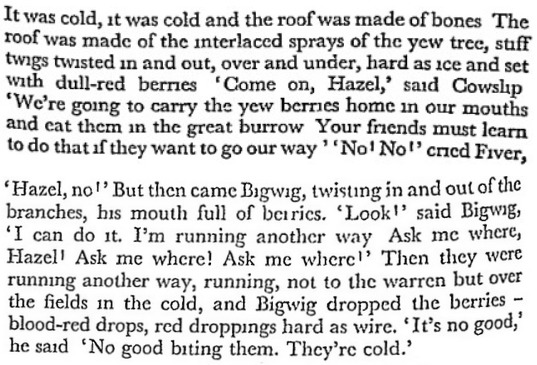
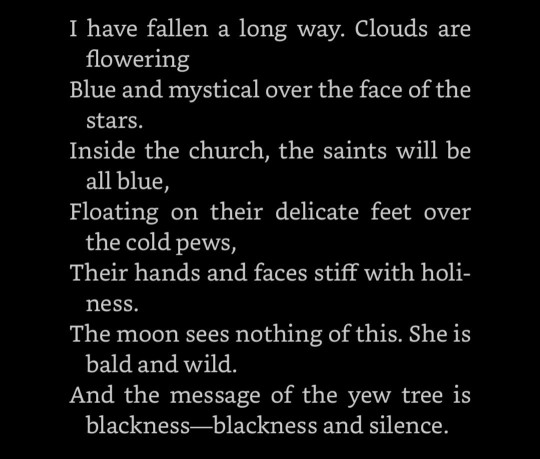


Suzuki Harunobu, Hares and Autumn Full Moon, Edo Period; Sylvia Plath, “The Moon and the Yew Tree”, 1961; Richard Adams, Watership Down, 1972; The Moon and the Yew Tree, Anthony Cockayne, 2014
#sylvia plath#the moon and the yew tree#richard adams#watership down#anthony cockayne#yew tree#web weave#yeah this is the entirety of the poem compared to passages from watership down what of it#long post#suzuki harunobu#hares and autumn full moon#web weaving
16 notes
·
View notes
Text

day 18 of folkbruary: your favourite tree 𓆱
#yew tree#original art#tree study#botanical study#tree art#folkbruary#folk art#english yew#art study#paganart#peapappa draws#digital illustration
22 notes
·
View notes
Text
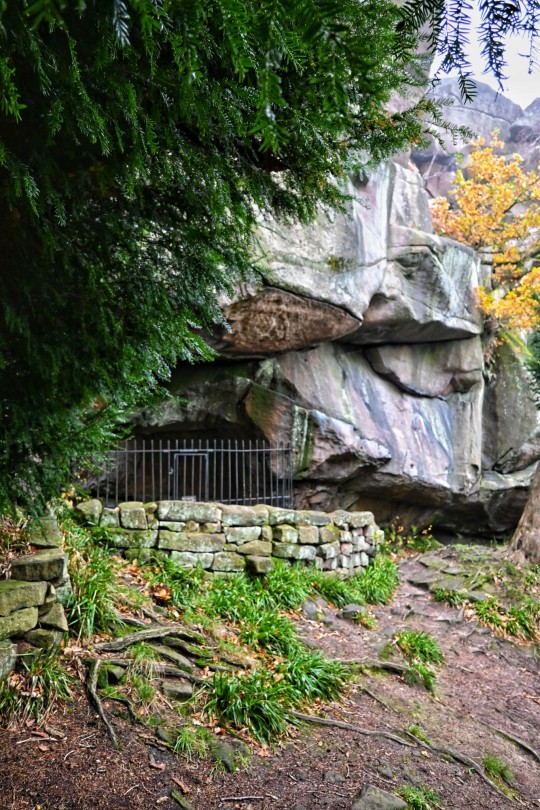


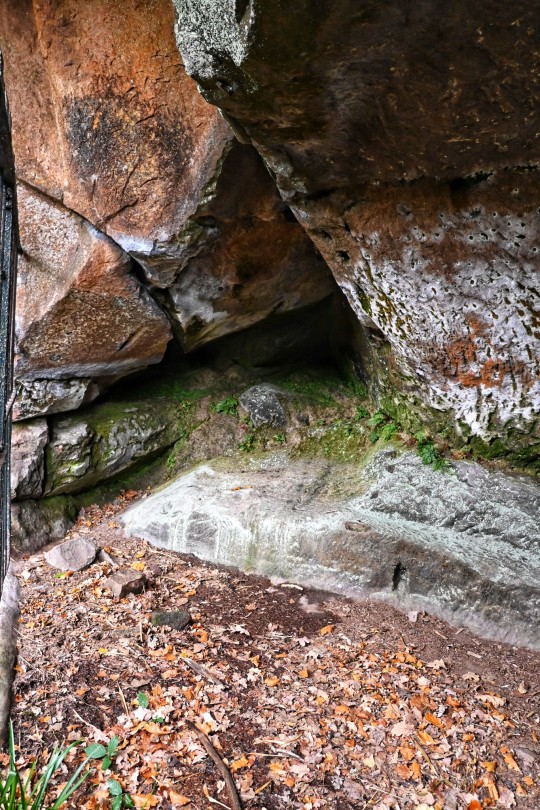
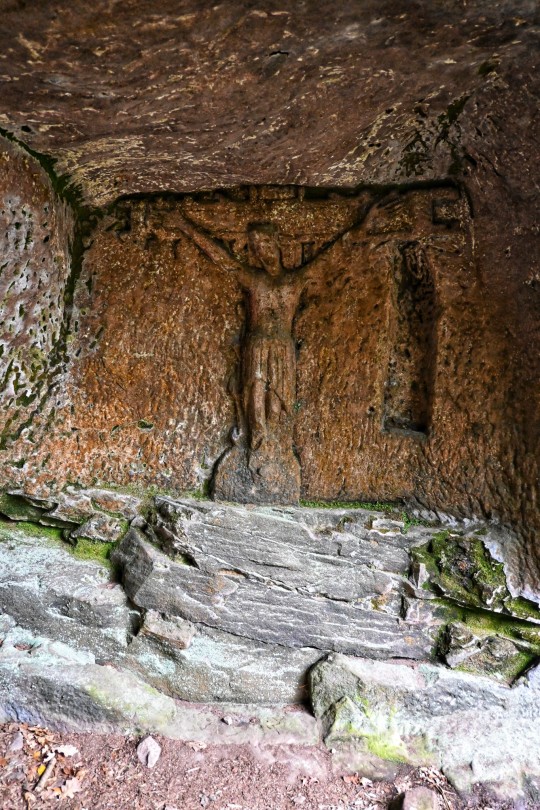




Cratcliffe Tor Hermit's Cave and Shrine (circa 14th century), near Birchover, Peak District
#hermitage#hermit's cave#cave#shrines#crucifix#early religion#landscape#nature#yew tree#peak district#ancient living#belief#cratcliffe tor
30 notes
·
View notes
Text
Yew Tree Care, Toxicity, and Mythology
Avoid unwittingly planting a tree that is lethal to grazing wildlife, pets and people. Knowing the danger of planting yew trees on your property will help you decide if the risk is worth the threat.
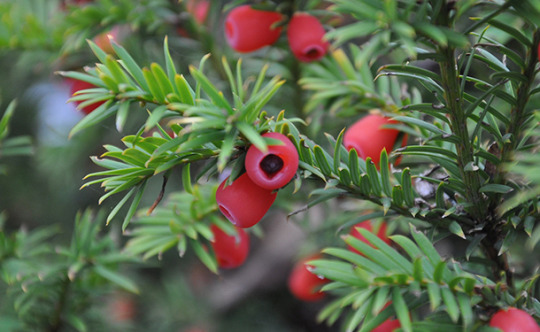
thetreecareguide.com gathered essential care information, toxicity warnings, and some of the mythology associated with the yew tree species.
Yew Tree Species Information
Yews (Taxus baccata) are densely branching, evergreen trees with a large trunk reaching 20 to 30 feet tall. The bark is thin, scaly, and brown; it comes off in small flakes. Its leaves are dark green, leathery, and narrow with a pointed tip.
Yew can be grown in full sun, partial shade, and full shade. For healthier and more lush growth, however, choose a spot that gets several hours of daily sun. Too much shade can result in thin or irregular growth.
This species can live 400 to 600 years, with some specimens exceeding this lifespan. Consider the following when selecting and preparing a growing location for your yew tree:
Soil Preference - This species thrives in rich, loamy, well-drained soil with a neutral to slightly alkaline soil (5.0 to 8.0 pH).
Watering Needs - Established yews require minimal watering. However, during drought conditions, weekly watering is recommended. Adding a layer of mulch around the tree’s base will help retain moisture in well-drained soil.
Fertilizing Yews - Yew trees under 15 years can be fertilized each spring. More mature trees will benefit from feeding every other year. For best growth results, apply a “20-15-15” granular or liquid fertilizer around the yew’s drip line, avoiding the area immediately around the trunk.
Pruning Requirements - This evergreen species is typically pruned twice a year, once in early July and again in early September. Up to 2/3 of new growth can be safely removed to shape this tree during the July pruning. The fall pruning should be a light touch-up to even out any secondary growth.
Hardiness Zone - 3 through 8
Note: Taxus baccata is widely grown in landscapes for decorative purposes or privacy screening, and the species responds well to pruning.
Yew Winter Care
Yews planted in the right conditions can tolerate cold winters without protection. However, they can experience severe winter burn and bleaching. These conditions can be prevented by planting your yew trees on the north-facing side of buildings.
Note: Winter burn occurs when needles and branches repeatedly freeze and are then heated by the winter sun. Read more about protecting your yew during winter weather.

Yew Toxicity
Taxus baccata is a well-known poisonous tree species; all yew parts are deadly poisonous, except for the berry’s flesh. Eating a small quantity of leaves can be fatal for wildlife, livestock, and humans. Yew leaf toxicity is due to alkaloids known as taxines, of which taxine B is suspected as being one of the most poisonous.
Note: Taxine alkaloids are absorbed through the digestive tract incredibly fast, and poisoning signs (nausea, dry mouth, vomiting, stomach pain, dizziness, weakness, nervousness, heart problems, etc.) manifest themselves after 30 to 90 minutes. No antidote is known.
Yew Mythology
The following are some incredible examples of how yews have been embraced by and influenced cultures over millennia:
In Celtic Culture - Old yew tree drooping branches can root and form new tree trunks where they contact the ground. Thus the yew came to symbolize death and resurrection in Celtic culture. The Celts would also have been familiar with the tree’s toxicity.
In Christian Lore - The yew, in particular, symbolizes nature's power of renewal, the seasons’ cycles, birth and death, and new birth. Over time, the yew remained a symbol of eternity in Christianity. However, the words and focus were changed from 'rebirth' to ‘resurrection.’
In Norse Cosmology - The world tree “Yggdrasil” is a massive mythical tree connecting the nine worlds in Norse cosmology. Although typically translated as Ash, it is believed that this tree is likely to have been a Yew.
Ancient Warriors - In ancient times, yews were used for suicides during war times. Food and drink vessels made from yew wood could poison those who ate or drank from them.
The Druids - Yew is typically associated with the dead and is often found in graveyards. The Druids saw yew trees as the guardians of the deceased.

In Greek Mythology - Yew trees are associated with the Greek goddess Hecate, liberator of souls after death.
Note: For as poisonous as yew is, two chemotherapy drugs were developed from yew trees:
Docetaxel (Taxotere) was first made from the European yew tree’s needles
Paclitaxel (Taxol) was made from the Pacific yew tree’s bark
Fascinating how a tree so rooted in poison and death can provide treatment and hope for those with severe health concerns.
Yew Trees
In this article, you discovered species planting and care information, severe toxicity warnings, and some of the ancient mythology surrounding the Taxus baccata species.
Knowing the risks of planting a yew tree and how to minimize them will help you grow a stunning tree that can serve as a specimen tree, landscape tree, or privacy hedge.
Unwittingly planting a poisonous yew tree can lead to grazing wildlife, animals, livestock, or unsuspecting people being poisoned.
Sources:
extension.umn.edu/yard-and-garden-news/ask-extension-do-i-need-protect-my-yew-winter
plants.ces.ncsu.edu/plants/taxus-baccata/
heritagegarden.uic.edu/yew-taxus-baccata
For the original version of this article visit: https://www.thetreecareguide.com/yew-tree-care-toxicity-and-mythology/
#Yew Toxicity#Yew Mythology#Yew Tree#Taxus Baccata#Poisonous Tree#Tree#Tree Care#The Tree Care Guide
10 notes
·
View notes
Text



Pine trees and yew shrubs in the Amsterdamse Bos
#amsterdam#amsterdam netherlands#pine trees#pine tree#city park#park#trees#forestcore#forest#woodland#woods#naturecore#nature#the netherlands#photography#nature photography#yew tree#conifers#sunset#sunset photography#autumn#autumn aesthetic#cottagecore#landscape photography#aesthetic
13 notes
·
View notes
Text
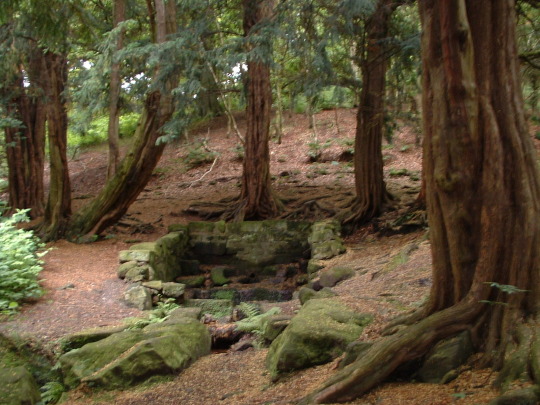




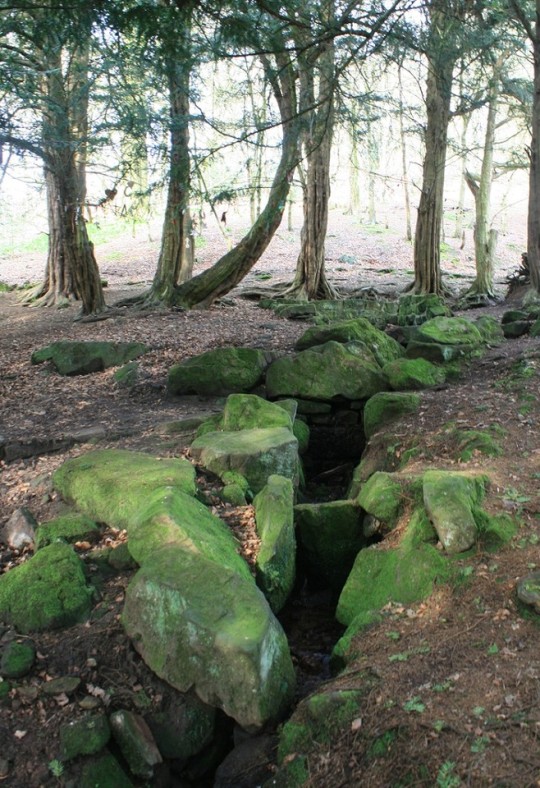
Sacred Spring of Gawton's Well - Staffordshire - England
The site with the spring, voted one of the most mystical places and certainly one of the most atmospheric of Staffordshire’s ancient wells, is found on the remains of the Kynpersley Estate. It fills at first an elliptical stone basin, then a small rectangular basin and then a larger one which could have formed a bath. There is a semi-circular stone just after this and it then flows through a number of large rocks forming a stream. The site has an excellent arrangement: the juxtaposition between the man-made and the natural.
The oval stand of yews around the well is reputed to be the remains of a druidic grove, and although these specimens must be considerably younger than that, perhaps they are the descendants of those long forgotten trees.
The Biddulph Museum website (which also describes the site as a “Druid Grove”) tells this story:
Gawton / Gorton was one of the servants of Knypersley Hall when he became ill with the plague. Due to everyone thinking they would fall ill he was forced to leave. He left and went to live in a cave (Gawton’s Stone) near Knypersley pool.
Nearby was a spring which is known as Gawton’s Well which is where he bathed every day. He also used the spring for his drinking water. The spring was believed to have the power to heal skin diseases by the locals and apparently cured Gawton of the plague.
Even though he was now healed he continued to stay at the cave and lived there till his death.
#sacred place#sacred spring#sacred well#staffordshire#england#yew#yew tree#healing water#nemeton#gawton's well#druidic#druidry#druid#druidess#paganism#celtic paganism
17 notes
·
View notes
Text


Like a monument, Europe's oldest tree stands by a Scottish church
#Fortingall#Perthshire#Scotland#oldest tree#5000 yrs old#yew tree#archaeology#nature#landmark#churchyard#UK
12 notes
·
View notes
Text
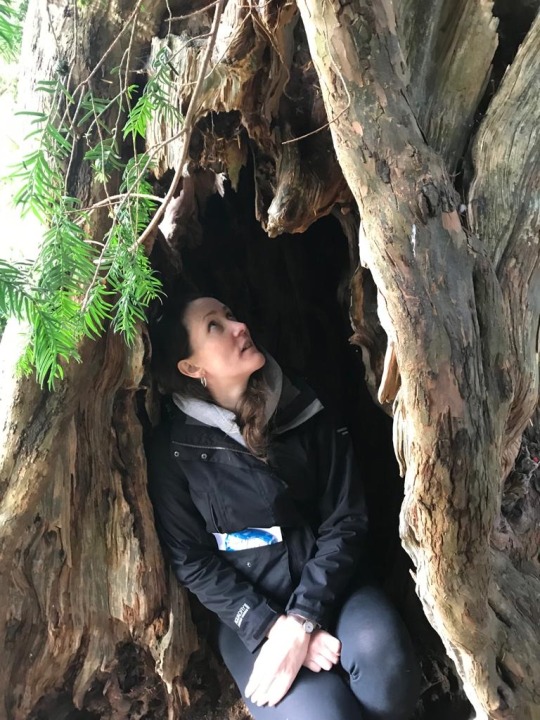
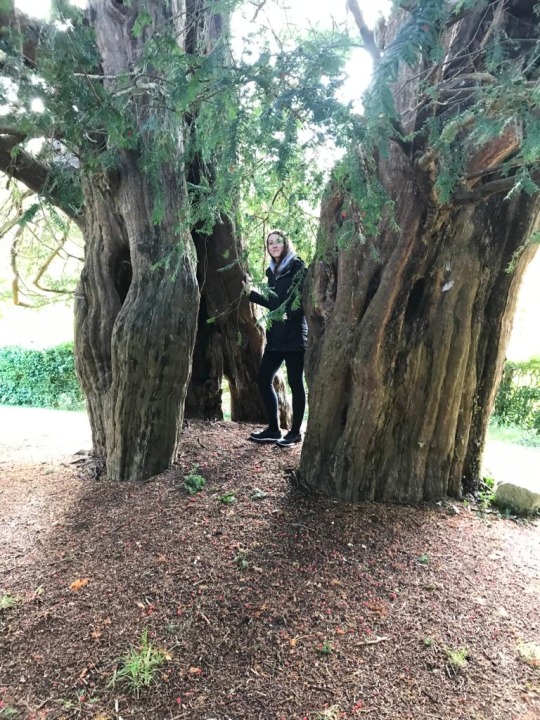
In the embrace of an ancient yew at an undisclosed English location. The spirit of the tree declined to conduct my soul to the Land of the Dead. Not my time yet, I suppose.
4 notes
·
View notes


